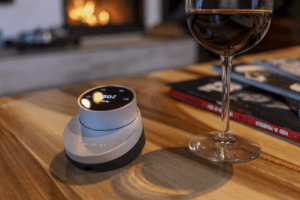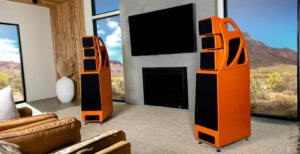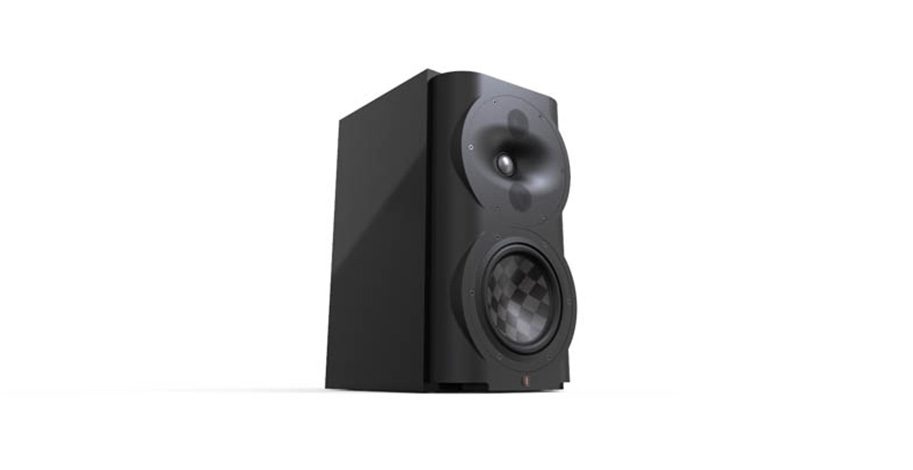
I got it wrong when I first reviewed the Perlisten S4b stand-mount loudspeaker. I was not wholly wrong, but in hindsight, I underplayed its bass performance. And, paradoxically, it took a subwoofer to show me how wrong I was.
The name Perlisten is a portmanteau of ‘PERceptual LISTENing’, the company’s core consideration in designing and manufacturing its loudspeakers and subwoofers. The results of this Perceptual Listening programme centres around creating a loudspeaker that transcends the room in which it is playing. This is related to the DPC (directivity pattern control) array, which in the S4b combines a 28mm beryllium dome tweeter sandwiched by a pair of 28mm ‘Textreme’ thin-ply carbon diaphragm (TPCD) midrange units, all in an acoustical lens waveguide. This is joined by a 180mm TPCD bass unit, with the woven thin-ply diaphragm said to be almost a third lighter than carbon-fibre drivers of the same diameter. These sit in a CNC-machined front baffle.
This sealed cabinet is cleverly internally braced allowing the mid-bass unit to be isolated from the mid-tweeter-mid array, and every aspect of the cabinet – from the dish shape of the glass-reinforced plastic waveguide to the placement of the drivers in the cabinet – has been the subject of some intensive computer modelling.
Bring on the subwoofer
The D12s is Perlisten’s smallest subwoofer, with a 300mm carbon-fibre bass unit and an amplifier that can deliver 1.5kW short-term power. The sealed sub is controlled by a 48-bit data bath DSP and 32-bit ARM M4 Cortex processor. It includes a 2.4” LCD touchscreen and can be controlled by Perlisten’s App. For home cinema enthusiasts, two of them achieve THX Dominus specifications.
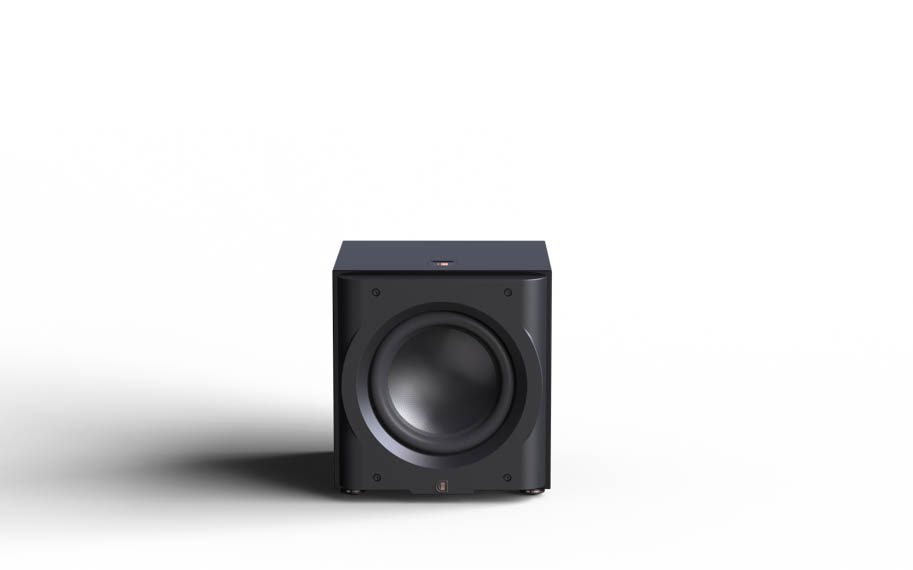
I’m used to active subs in audio systems running from high-level outputs from the loudspeaker terminals. However, in the case of the D12s, Perlisten only has XLR and RCA inputs, requiring a spare preamplifier output. Even so, Perlisten has a lengthy and highly technical argument to say why line-level is correct, and – in fairness – it makes a good point.
Stand and deliver
Perlisten’s distributor Karma AV also supplied a pair of dedicated loudspeaker stands. These SSLR-HGB stands offer a slight back-tilt for the S4b, which adds a tiny degree of time alignment. They are also, to use the technical terms, ‘bloody heavy’! I don’t want to place too much accent on the stands as it’s easy to fall into ‘the speakers only work with X’ pigeon-holing. But they are a good match and I’d recommend using them if possible.
Harking back to the Issue 220 review, Perlisten’s approach to marketing and promotion is a rare oasis of sanity in the crazy world of high-end. There are no components made from spun unicorn hair or hippogriff feathers. The technology is based on science, not science fiction. No one has woken up with a loudspeaker design lodged in their dreamcatcher. This is a refreshing, no-frills way of showcasing a product, based on its performance alone. How novel!
It’s that honesty that led me down an erroneous path. The loudspeakers start their roll-off at around 100Hz, which should put them into ‘satellite’ territory in a ‘satellite/subwoofer’ system. And yes, the sound reinforcement from a subwoofer – especially the D12s – makes a lot of sense. But it’s nowhere near as vital as I first thought. I only really shook off the description in print when I turned on, and then turned off, the D12s. But that comes later.
However, trying the full Perlisten system with the sub and the stands was one of those audio moments of epiphany.
I mentioned in the last review how the Perlisten is a bastion of truth in audio reproduction, but that’s worth reiterating and shouting about loudly. Remember the term ‘hi-fi’? It means ‘high-fidelity’; components that have high fidelity to the recorded sound. Somewhere down the line, we’ve settled for compromises, especially in the loudspeaker. This is understandable; reducing distortion, and improving dispersion and flat in-room response, while maintaining dynamic range and headroom in loudspeakers is difficult. At best, companies nail a few of these important aspects at the expense of one or more of the others. The Perlisten system is the closest you can get to ticking all those boxes without throwing the cost of a Mercedes S-Class at the project.
‘Neutrality’ and ‘honesty’ in loudspeakers is not something we hear often; consequently, it can be dismissed as ‘boring’ or ‘sterile’ sounding. But five minutes in front of this Perlisten system paints a very different picture. It’s uncannily like the real deal. Voices have dimensionality and texture. Instruments have solidity and the complex mix of resonance and harmonic richness in stringed instruments shines through. Basses have depth and ‘shape’ to the notes (if you want to know why bassists choose specific types of electric bass, the Perlisten package will give you the low-down on the low end).
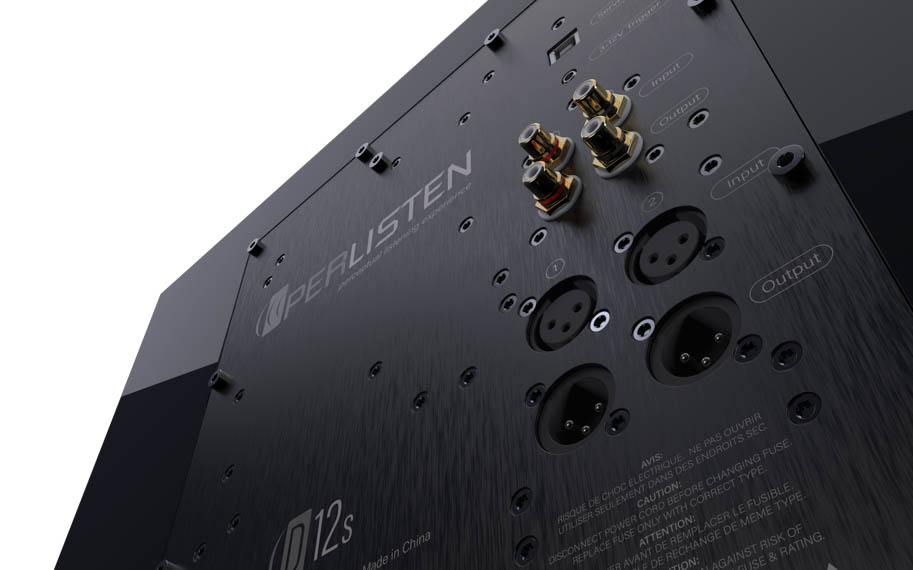
I’ve found that, for the best audio, highlighting the performance with musical examples seems churlish. It’s like singling out pieces of music when the equipment reacts equally well to the whole musical canon… as it should. The telling thing about the Perlisten performance is that the word ‘musicality’ never needs mentioning because you quickly realise that element is baked into the performance, not the replay chain. In Perlisten’s world, if a loudspeaker is called out for its musicality in one track, it might highlight an error in the loudspeaker that manifests on other tracks.
Once again, this sounds like damning the Perlisten with faint praise, but the ear-opening performance of this loudspeaker is nothing to be faint about. It’s like direct coupling the studio to your ears!
Here’s the odd bit!
After several days of enjoying the full-blown Perlisten system, I turned the sub off, as part of a loin-girding preparation for lifting over 40kg of subwoofer back into its box. And, because the loudspeakers are so beguiling, I gave them a second listen. At that point, I realised I had painted myself into a corner in the last review. These are not satellites searching for a sub, but extraordinarily competent loudspeakers in their own right. At first, I thought this odd; the bass was clean and precise and deeper than I expected, given these speakers begin their roll-off at 100Hz. There was nothing missing here.
I turned the sub back on, and the reinforcement was fast, precise, and solid. It wasn’t as needed as I thought last time, but it was great to be there for backup. The performance of the D12s is wonderful; it has the gutsy drive needed to make cinematic soundtracks come alive and the dynamism and energy it delivers in that setting is first-rate. But in a setting where it is just there to gently coax a little more bottom end out of the music, it has the subtlety and grace needed to control that bass perfectly. It’s also an ideal match for the S4b. Even the speaker stands contributed to the performance of the loudspeakers. It’s all good.
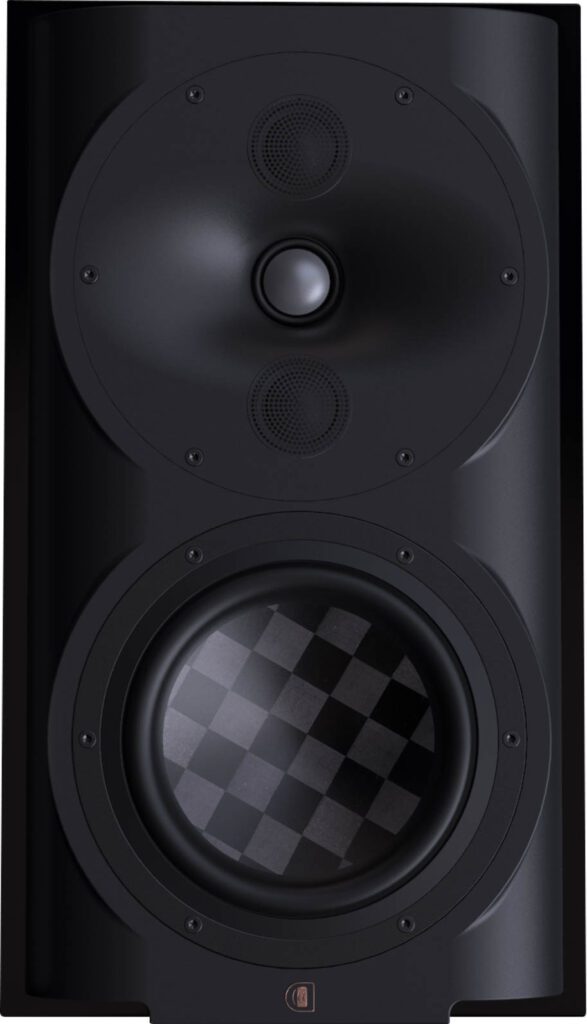
Perhaps most important is the potential this speaker system offers those willing to take the next steps in audio. Not only is this an extremely honest and accurate sounding loudspeaker, but Perlisten’s considered approach to design – and in particular loudspeaker directivity – makes this speaker system a blank canvas for sophisticated DSP room correction and treatment. I feel room correction can be limited by the idiosyncrasies of the loudspeaker and when those idiosyncrasies are held at bay, DSP can shine.
In truth, this loudspeaker has fewer idiosyncrasies than most, and consequently is a rare beasty in a crowded field. The Perlisten S4b/D12s combination’s qualities make it an ideal choice for extracting the maximum emotional purchase in-room with or without DSP, but surely it would present a perfect partner for the likes of Trinnov and its excellent room analysis and digital compensation, if that’s your bag.
Love the honesty
The Perlisten S4b is an awesome speaker. When you add the subwoofer and stands, what was world-class suddenly moves to another level. This is one of the best examples of those metropolitan loudspeaker systems we discuss here at hi-fi+. This system squeezes a quart in a pint pot and sounds great. If you think there is such a thing as ‘too much honesty’ in audio, the Perlistens will show you precisely where you are wrong, and you’ll love it for that honesty.
Technical specifications
S4b stand-mount loudspeaker
- Type three-way acoustic suspension stand-mount loudspeaker
- Drivers DPC Array (28mm beryllium dome tweeter with 2× 28mm textreme TPCD midrange), 180mm Textreme TPCD woofer
- Sensitivity (2pi) 85dB @ 2.83v/1m
- Impedance 4Ω nominal, 3.2Ω minimum
- Frequency response 100Hz–20kHz ±1.5dB, 36Hz–37kHz -10dB
- Typical in-room bass extension 30Hz
- Finish Piano black, gloss white as standard, High Gloss Ebony, Natural Cherry, Natural Ebony, Natural Black Cherry available for an additional £1,520. Pantone colours on request
- Dimensions (H×W×D) 42 × 24 × 18.5cm
- Weight 11kg
- Price from £7,600, $7,990 per pair
SSLR-HGB Stand
- Dimensions (H×W×D) 51 × 37 × 47cm
- Weight 17.5 kg each
- Price £1,500, $2,750 pair
D12s subwoofer
- Enclosure Sealed box, acoustic suspension subwoofer
- Driver 300mm carbon fibre long-throw bass unit
- Inputs XLR (×2), RCA (×2)
- Amplifier power 1.5kW
- Display interface 2.4” LCD colour touchscreen
- Dimensions (H×W×D) 45 × 42 × 45cm
- Weight 41kg
- Price £4,000, $4,995
Manufacturer
Perlisten
UK distributor
Karma AV
+44(0)1423 358846
Tags: D12S SUBWOOFER PERLISTEN S4B STAND-MOUNT LOUDSPEAKERS SSLR‑HGB STANDS
By Alan Sircom
More articles from this authorRead Next From Review
See all
PrimaLuna EVO 100 phono preamplifier
- Apr 22, 2024

Reiki Audio SuperSwitch Master Pro + Servant Pro
- Mar 27, 2024

Melco Audio N1-S38 music server
- Mar 27, 2024








